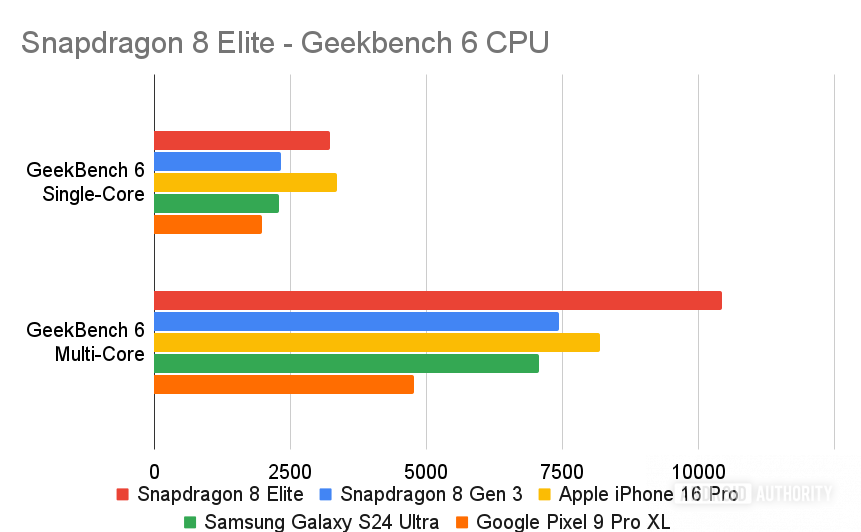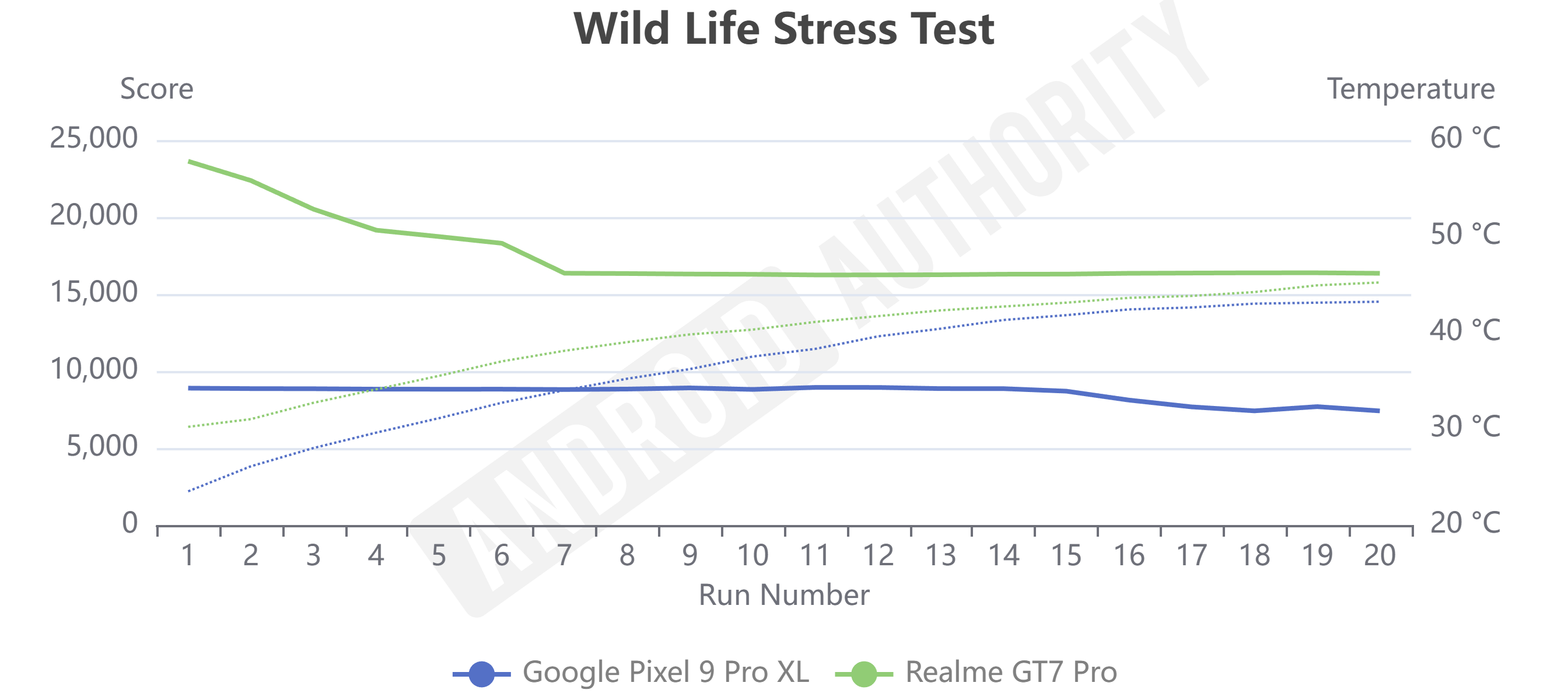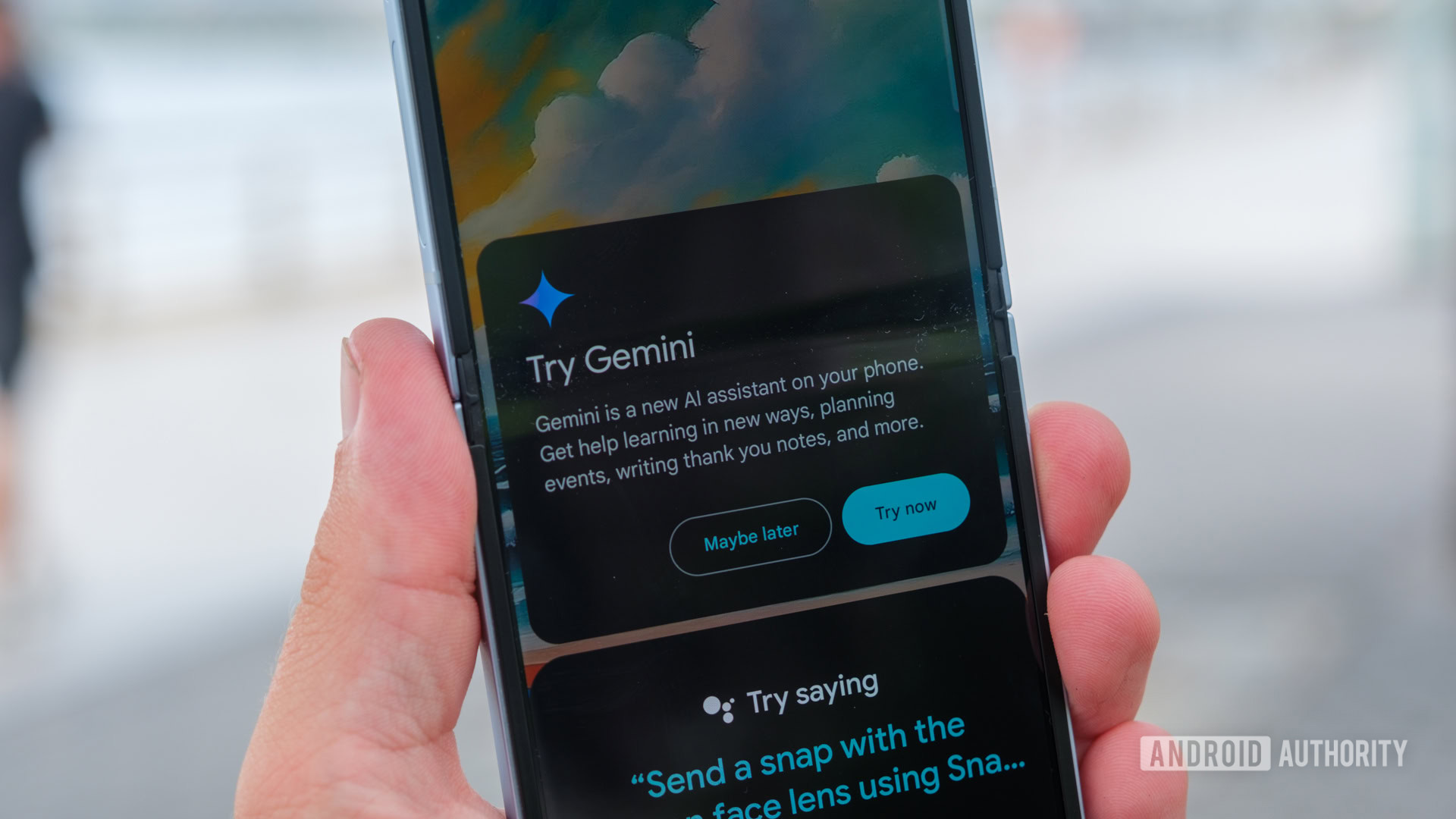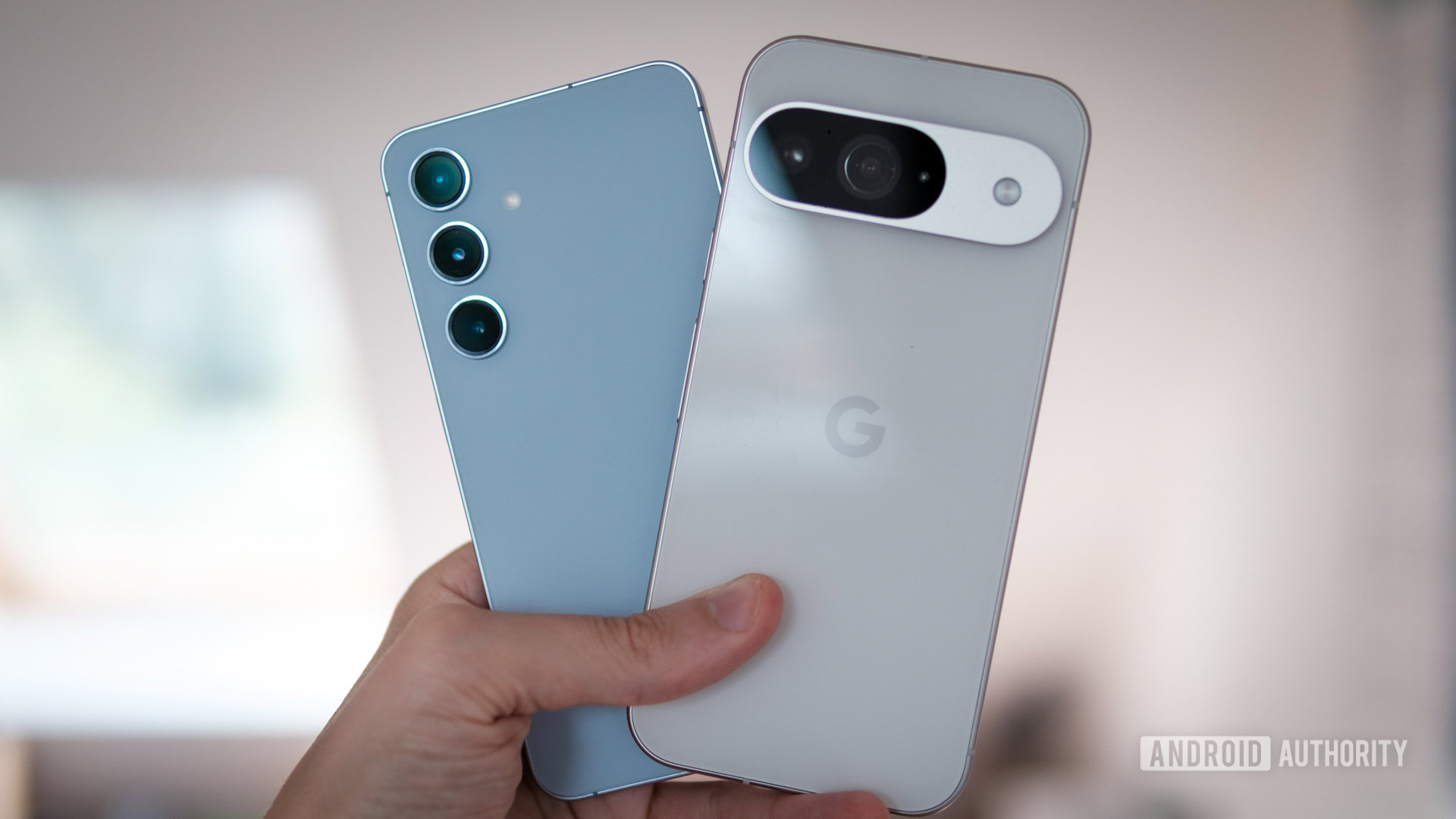Affiliate links on Android Authority may earn us a commission. Learn more.
Snapdragon 8 Elite vs Tensor G4: Which should be in your next phone?
November 4, 2024
The mobile industry finds itself at yet another crossroads. On the one hand, we have Qualcomm’s new Snapdragon 8 Elite, offering astronomical levels of CPU and GPU performance that push our humble smartphones ever closer to the laptop sphere. On the other hand, we have Google and its Tensor project, seemingly far more content with “good enough” performance as long as it can power unique AI and photography features.
Of course, it would be wrong to frame this performance gap as solely an engineering choice. Qualcomm is reaping the benefits of a very expensive CPU division acquisition and decades of industry experience, while Google is only just crawling out of Samsung’s shadow to start on its independent chipset journey.
Snapdragon 8 Elite or Tensor G4: Which chip is best?
Still, if you’re debating whether to buy a new Google Pixel 9, wait for the Samsung Galaxy S25, or pick up something from China, you have a tough choice to make about whether performance or features are your top priority. Which one should you pick?
Snapdragon 8 Elite vs Tensor G4 specs
| Snapdragon 8 Elite | Tensor G4 | |
|---|---|---|
CPU Config | Snapdragon 8 Elite 2x 4.32GHz (Oryon) 6x 3.53GHz (Oryon) | Tensor G4 1x Arm Cortex-X4 (3.1GHz)
3x Arm Cortex-A720 (2.6GHz) 4x Arm Cortex-A520 (1.92GHz) |
GPU | Snapdragon 8 Elite Adreno @ 1.1GHz (ray tracing support) | Tensor G4 Arm Mali-G715 (MC7?) @ 940MHz |
AI | Snapdragon 8 Elite Hexagon (fused scalar, tensor, and vector) | Tensor G4 Third-gen Tensor Processing Unit |
RAM support | Snapdragon 8 Elite LPDDR5X | Tensor G4 LPDDR5X |
4G/5G Modem | Snapdragon 8 Elite X80 LTE/5G (integrated) 4G LTE 5G sub-6Ghz and mmWave NB-NTN (satellite) support | Tensor G4 Exynos 5400 LTE/5G 4G LTE 5G sub-6Ghz and mmWave NB-NTN (satellite) support |
Other networking | Snapdragon 8 Elite Bluetooth 6.0 Wi-Fi 7, Wi-Fi 6/6E (802.11ax), Wi-Fi 5 (802.11ac), 802.11a/b/g/n | Tensor G4 Bluetooth 5.3 Wi-Fi 7, Wi-Fi 6/6E (802.11ax), Wi-Fi 5 (802.11ac), 802.11a/b/g/n |
Process | Snapdragon 8 Elite TSMC 3nm | Tensor G4 Samsung 4nm |
To start, let’s quickly recap a few key differences between the Snapdragon 8 Elite and the Tensor G4. Qualcomm’s in-house developments are the headline feature this year, beginning with its Oryon CPU core. It’s based on the Arm architecture, like all smartphone CPUs, but appears to be a larger-than-typical implementation that also allows for aggressive clock speeds as high as 4.32GHz. The 8 Elite features two Prime cores and six Performance cores, the latter of which has a lower but still significant 3.53GHz clock speed.
Google’s Tensor G4 is built from Arm’s Cortex series of “off-the-shelf” CPU parts, with one big Cortex-X4 core, three mid-tier Cortex-A720s, and four A520 efficiency cores. It has as many cores in total and is far from a sluggish setup, but its far lower clock speeds and slightly older architecture put it well behind the Snapdragon 8 Elite based on our benchmark numbers. Qualcomm’s new CPU is up to twice as fast.

This performance differential is reflected in the graphics department. Tensor’s GPU setup has long trailed Snapdragon, offering performance that is more equivalent to flagship chips from a couple of generations ago. Its Mali-G715 GPU still lacks ray tracing capabilities, which is hardly a major feature but one that mobile gamers looking for a future-proof purchase should take note of.

Meanwhile, the Snapdragon 8 Elite jumps ahead with an up to 40% improvement over its already industry-leading Adreno GPU. Sustained performance is looking a bit wobbly, but Qualcomm’s new sliced architecture is the fastest GPU in the mobile space by some distance. With ray tracing and support for advanced game engine features, like Unreal’s Nanite, it’s clear that Snapdragon is by far the better choice for gamers.
When it comes to raw speed, Tensor is miles behind. But how much performance do you really need?
Clearly, the Snapdragon 8 Elite is the chip to pick if you want the very best performance a smartphone has to offer. That said, it’s currently overkill for the vast majority of daily tasks, which the Tensor G4 handles more than competently as well.
Elsewhere, you’ll find broadly similar capabilities, with both sporting 6GHz and mmWave 5G capabilities, Wi-Fi 7 support, and even NTN satellite capabilities. Google’s Pixel series isn’t behind when it comes to these all-important connectivity features. Qualcomm has fancy extras in its XPAN, aptX, and Snapdragon Seamless tools, but these are more niche features that haven’t seen broad adoption quite yet. Still, if you have some fancy aptX audio gear, a capable Snapdragon phone nets you those benefits too.
Features vs performance, what matters most?

Qualcomm promises to support the Snapdragon 8 Elite for eight years, allowing partners to keep their phones ticking along just as long as Google’s Pixel series. With long-term support available from both platforms, future-proof performance is clearly in Snapdragon’s favor.
Still, Google has done a mostly solid job Feature-Dropping new additions to its Pixel smartphones, and it’s those exclusive goodies that lend the series continued appeal despite being far from the performance bleeding edge.
Whether it’s first access to Gemini Live, its renowned computational photography consistency, or exclusive tools like Best Take, software is the Pixel’s unique selling point, and no one builds on the core Android experience better than Google. That said, the TPU in the Tensor G4 is the same as in the G3, so we’re in a holding pattern for Google’s on-device AI advancements. The next jump might come with the Pixel 10 and its Tensor G5 chip.
None of Qualcomm's partners do software quite as well as Google .
That said, Qualcomm places heavy emphasis on its AI and imaging capabilities too, and the Snapdragon 8 Elite is even more powerful in this regard. While it’s difficult, if not impossible, to benchmark the wide range of AI workloads between chips, Snapdragon’s weakness is that its partners don’t have the AI development experience that Google has.
Partner implementations of Qualcomm’s unique chipset features have been historically hit and miss, and that’s being kind. Few have taken advantage of the various demos we’ve seen, from object segmentation to Stable Diffusion. Even fewer have robustly backported features to older generations as Google does, with Samsung standing out as the obvious exception.
Still, the Snapdragon 8 Elite supports Gemini Nano if you’re into AI assistants, and its imaging capabilities already power some of the industry’s best camera phones, such as the Xiaomi 14 Ultra. It’s not like Snapdragon owners have to compromise a lot on these core features, but Pixel clearly does more with less.
Snapdragon vs Tensor: Which should I pick?

Obviously, there’s a lot more than chipsets when it comes to picking out your next smartphone. Cameras, multimedia capabilities, and price, of course, all weigh probably even more heavily on the mind these days.
Still, when it comes to Google’s Pixel series versus the fleet of Snapdragon 8 Elite-powered smartphones that’ll be hitting the market soon, there’s a pretty stark choice. If you’re looking to keep your next phone for five or more years, the Snapdragon 8 Elite is going to hold up much better for next-gen use cases and gaming.
Snapdragon is the better chip, but updates, repairability, and other specs matter too.
However, you also have to consider how the manufacturer’s update policy is going to play out over that time, too. Prompt updates and a steady stream of new features remain Google’s domain for now, but we’ll see how Samsung and others do this generation. Similarly, battery replacements and repair costs are significant factors in a long-term purchase, and Google does pretty well here, too.
Don’t worry if you’re undecided, I’m not quite sure what I’ll be picking up next year either. I’m tempted by the appeal of ultra-premium performance but will no doubt I find it difficult to leave Google’s software setup. Tough choices ahead. I’m going to wait and see.
Thank you for being part of our community. Read our Comment Policy before posting.